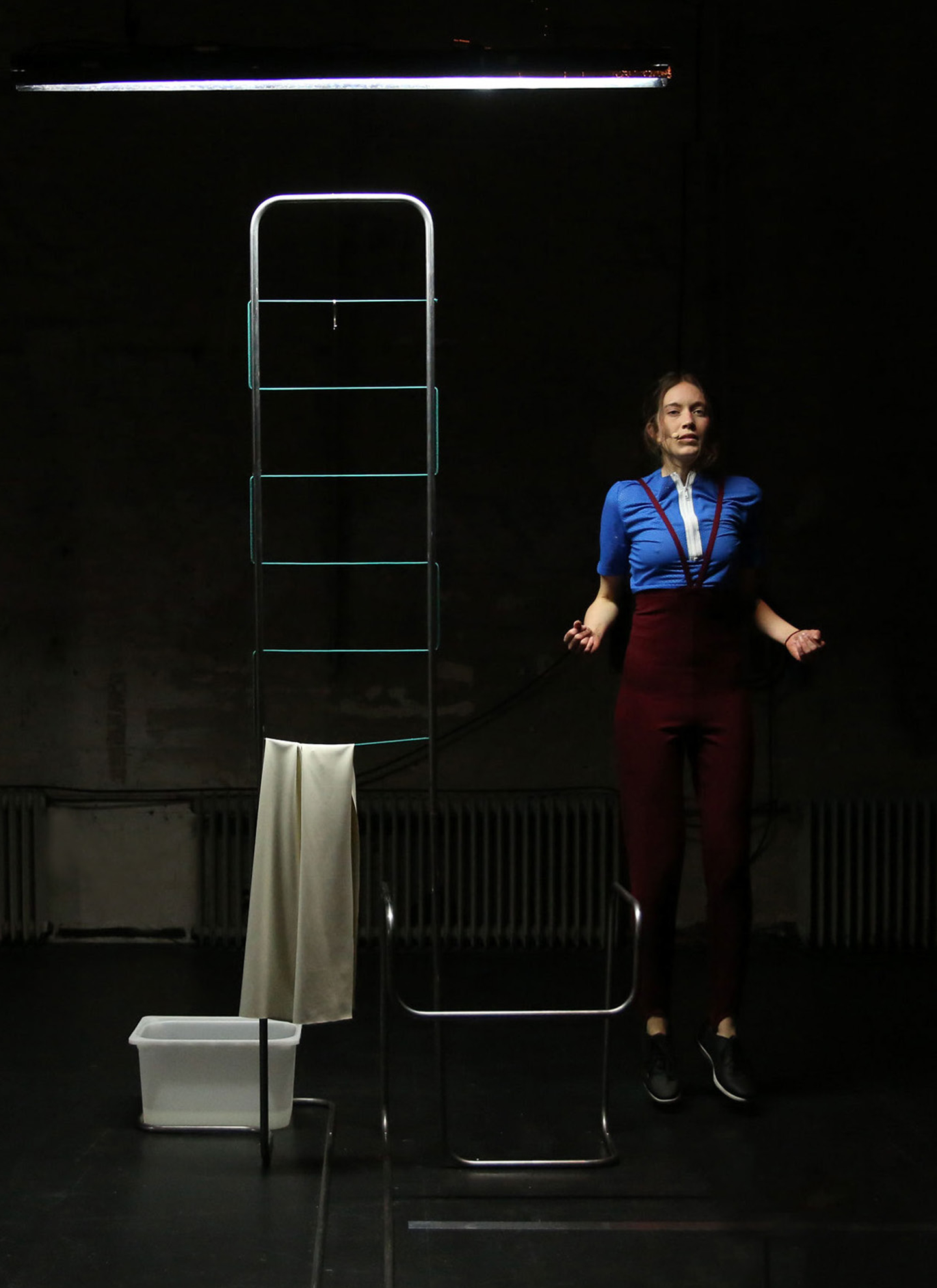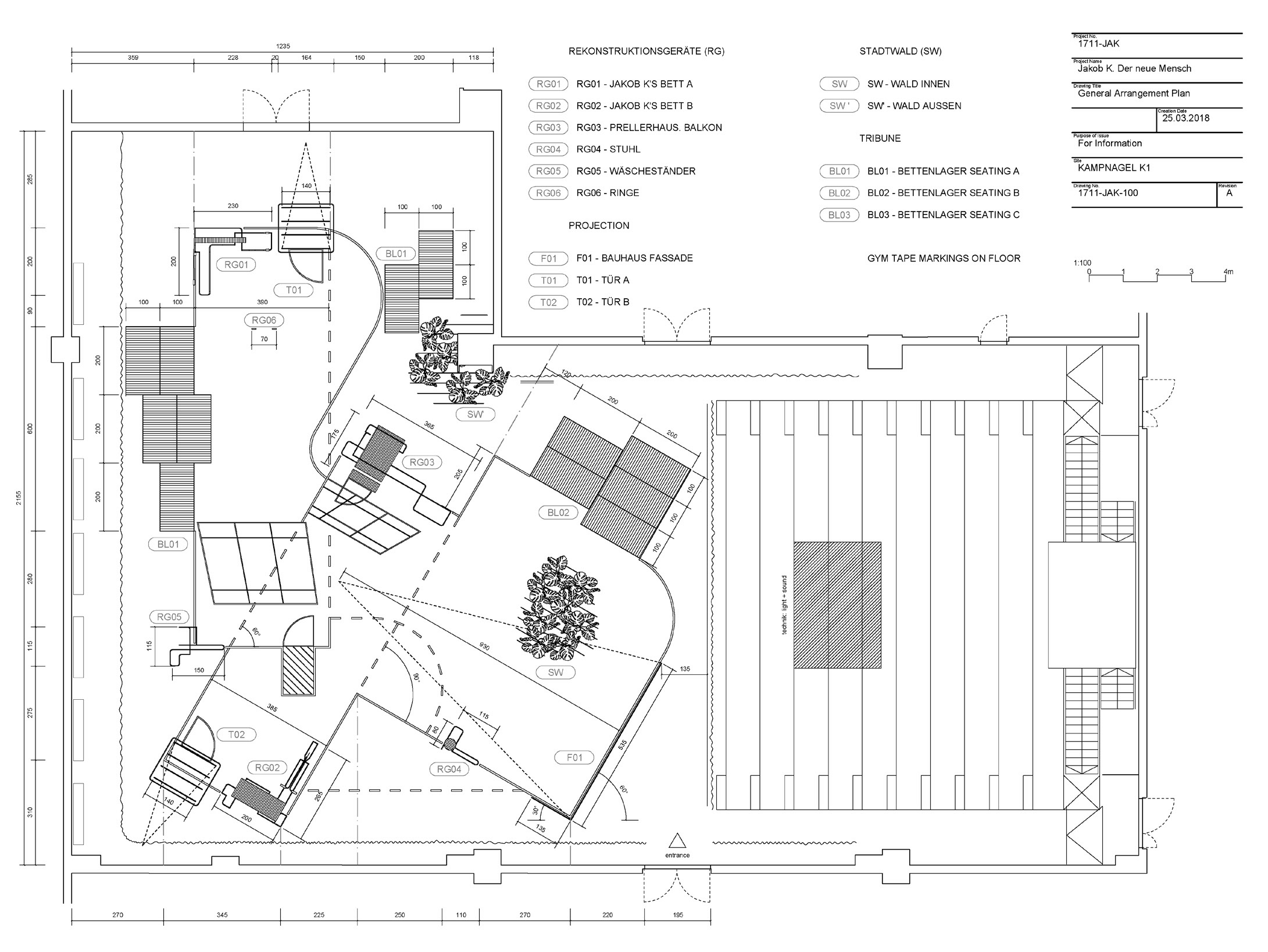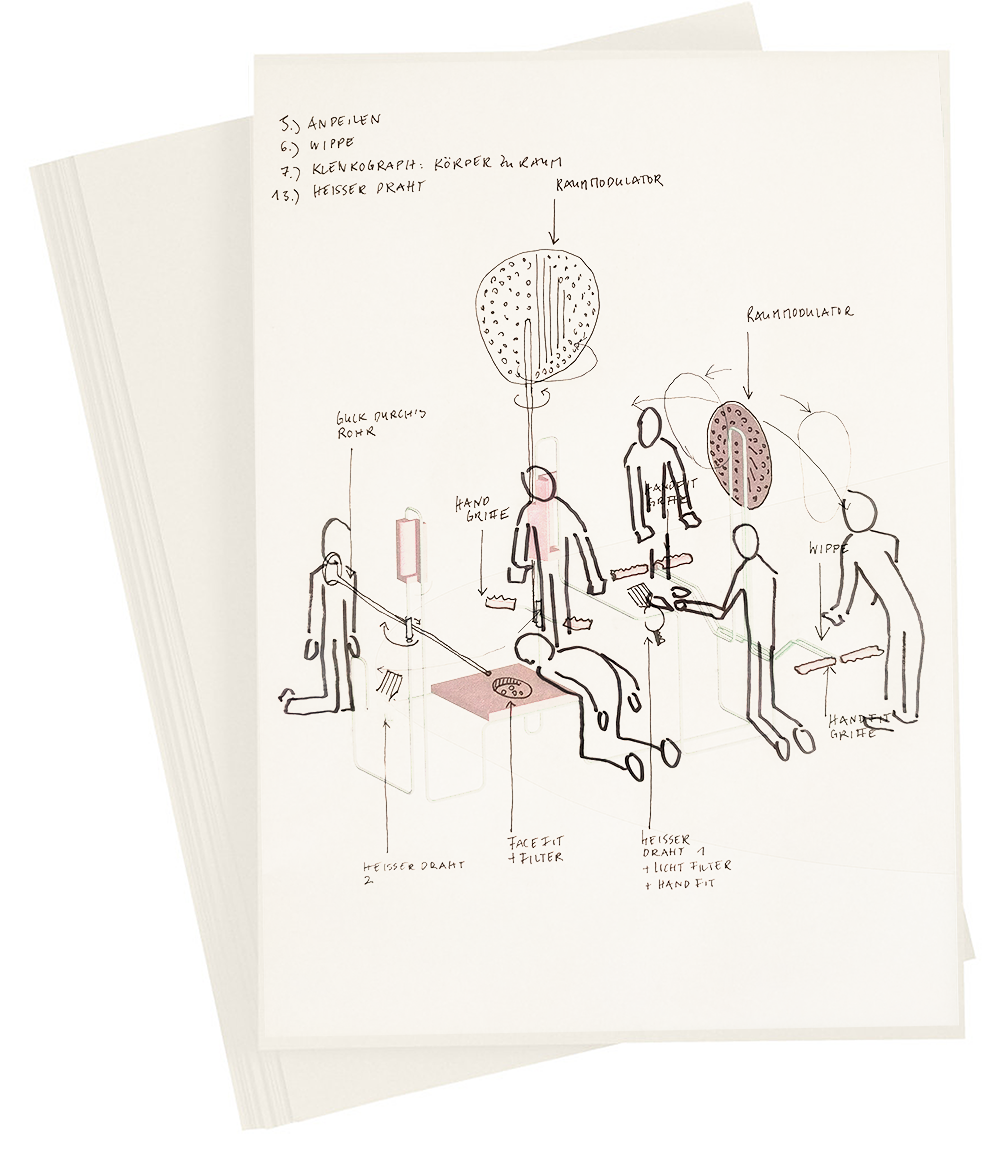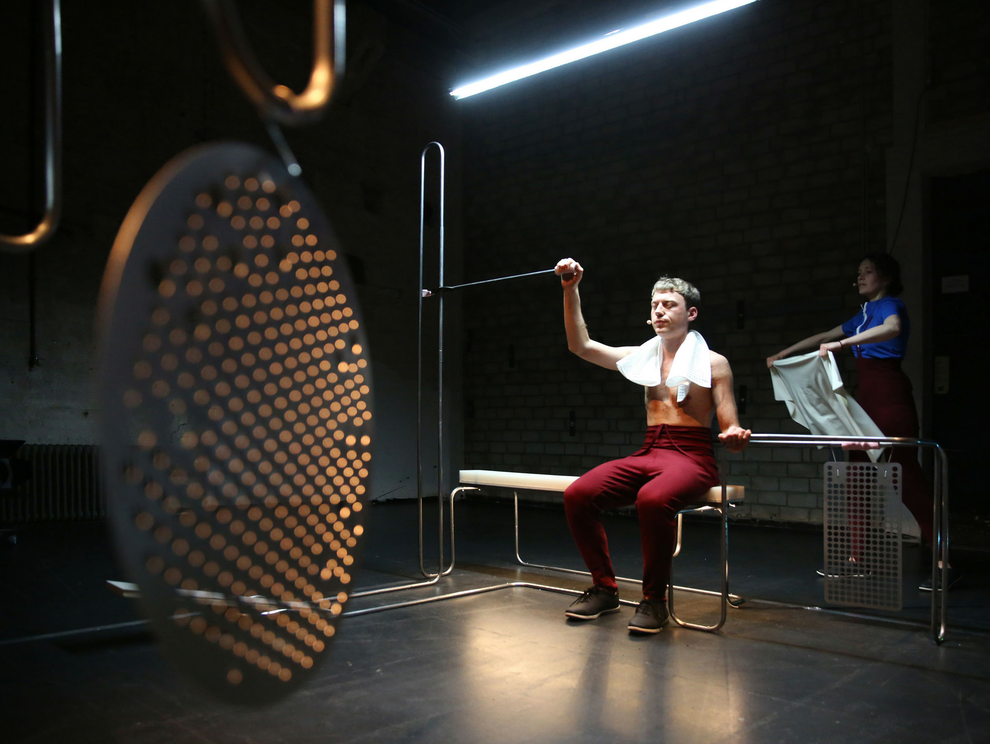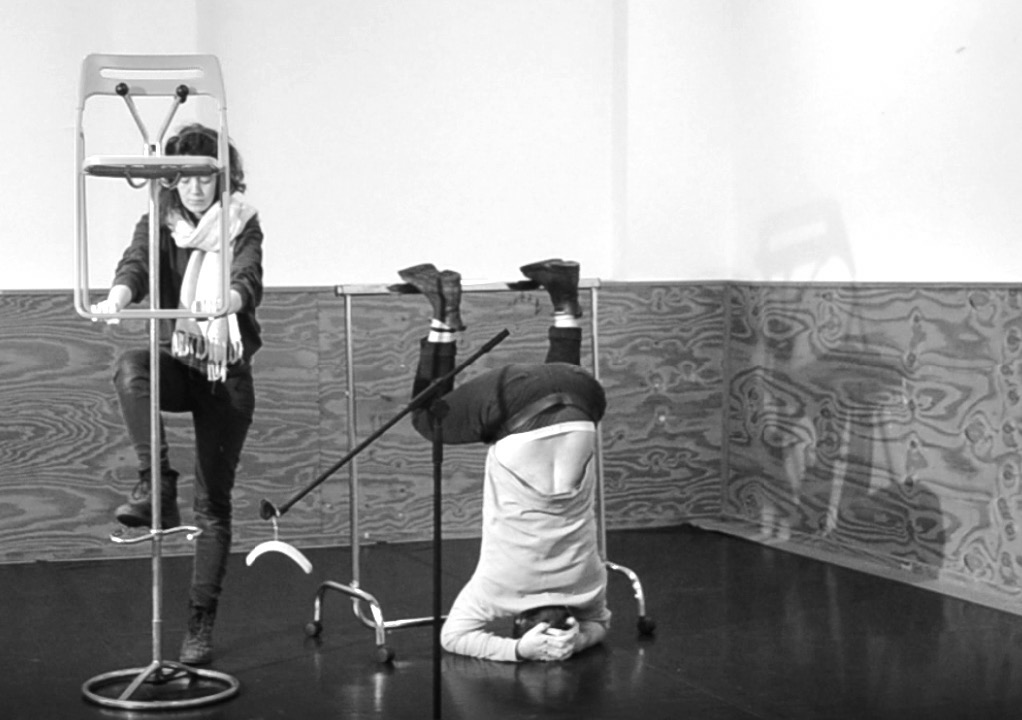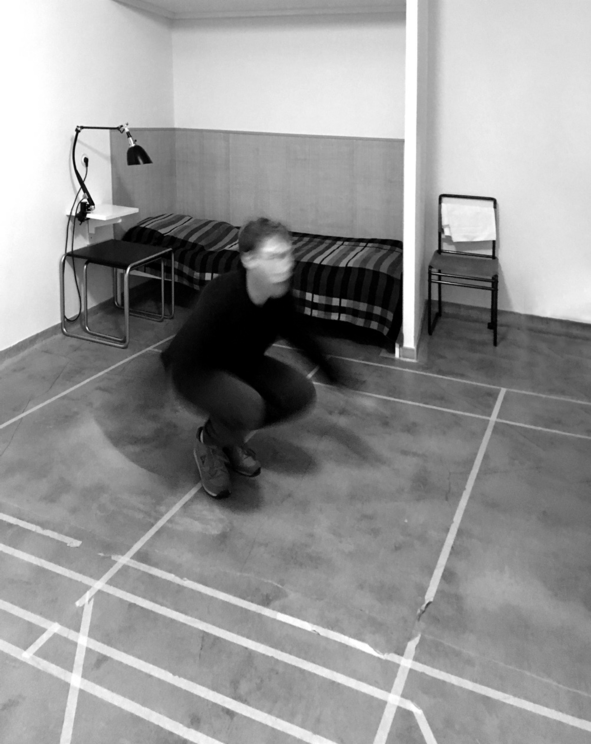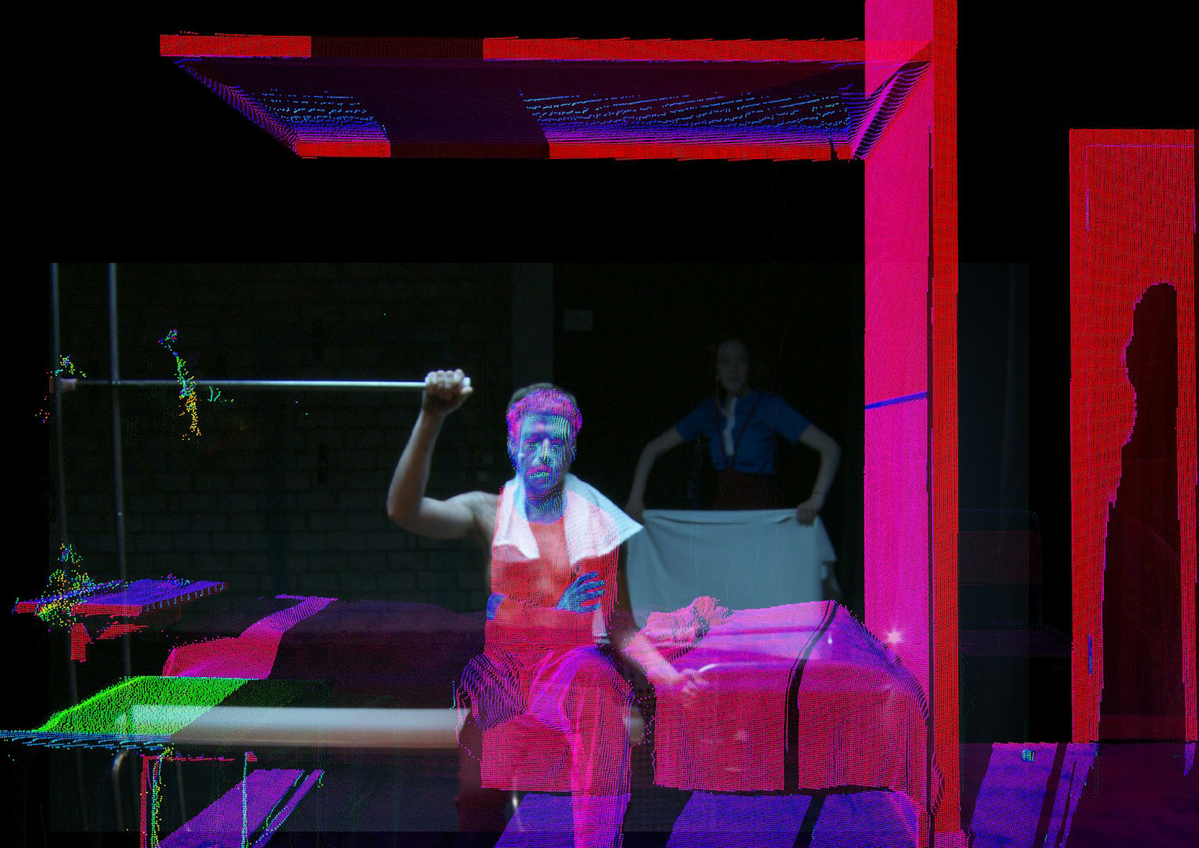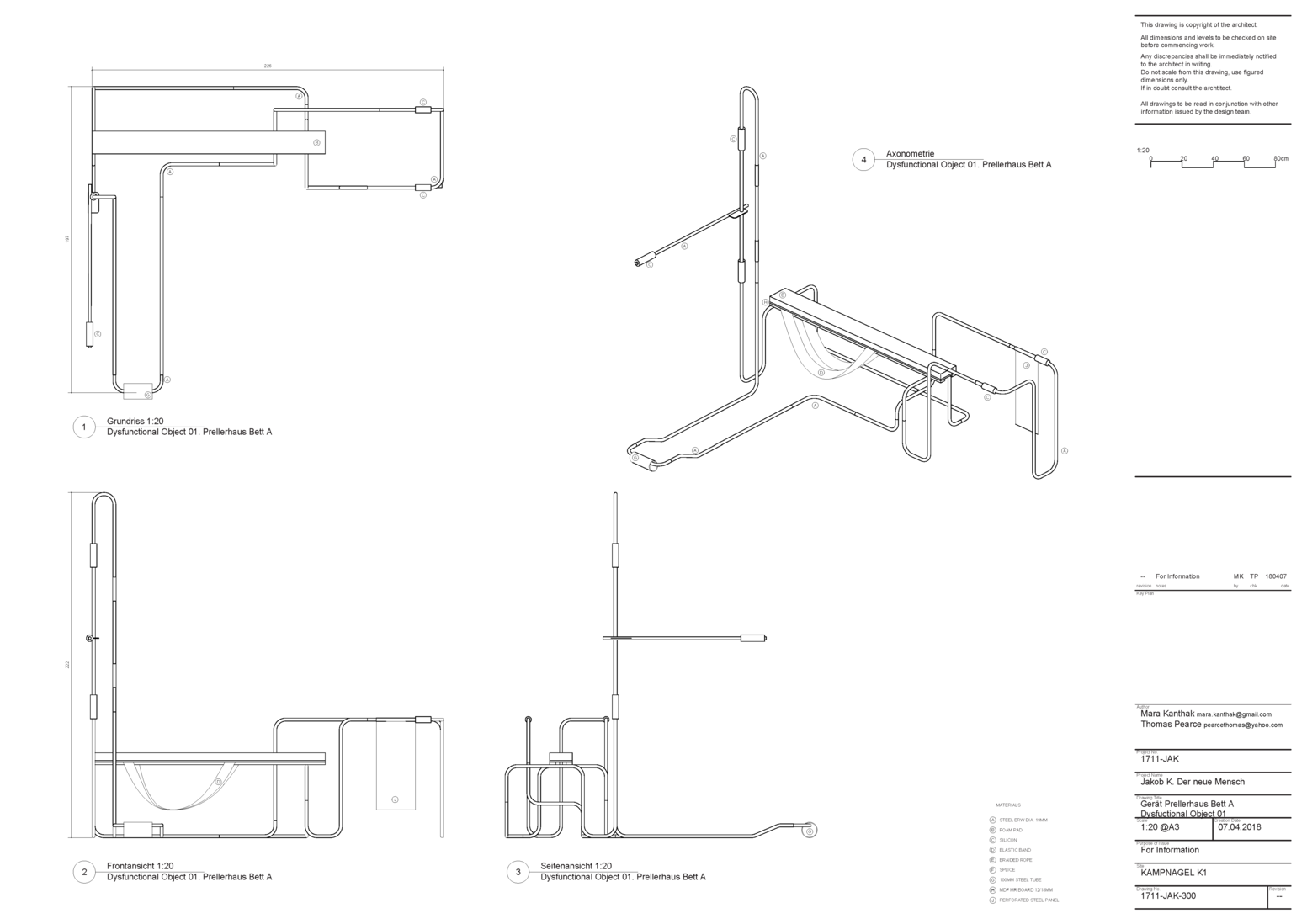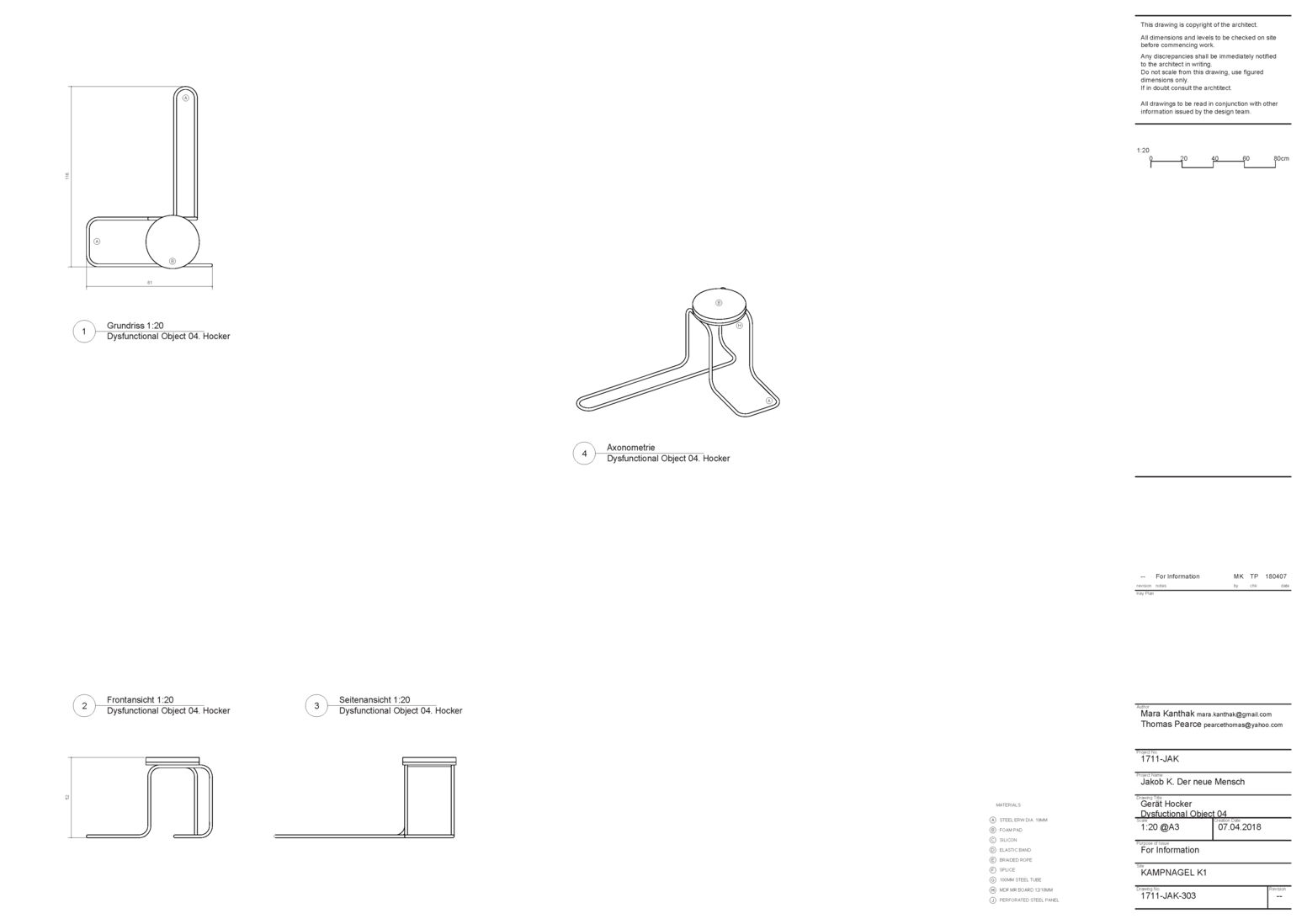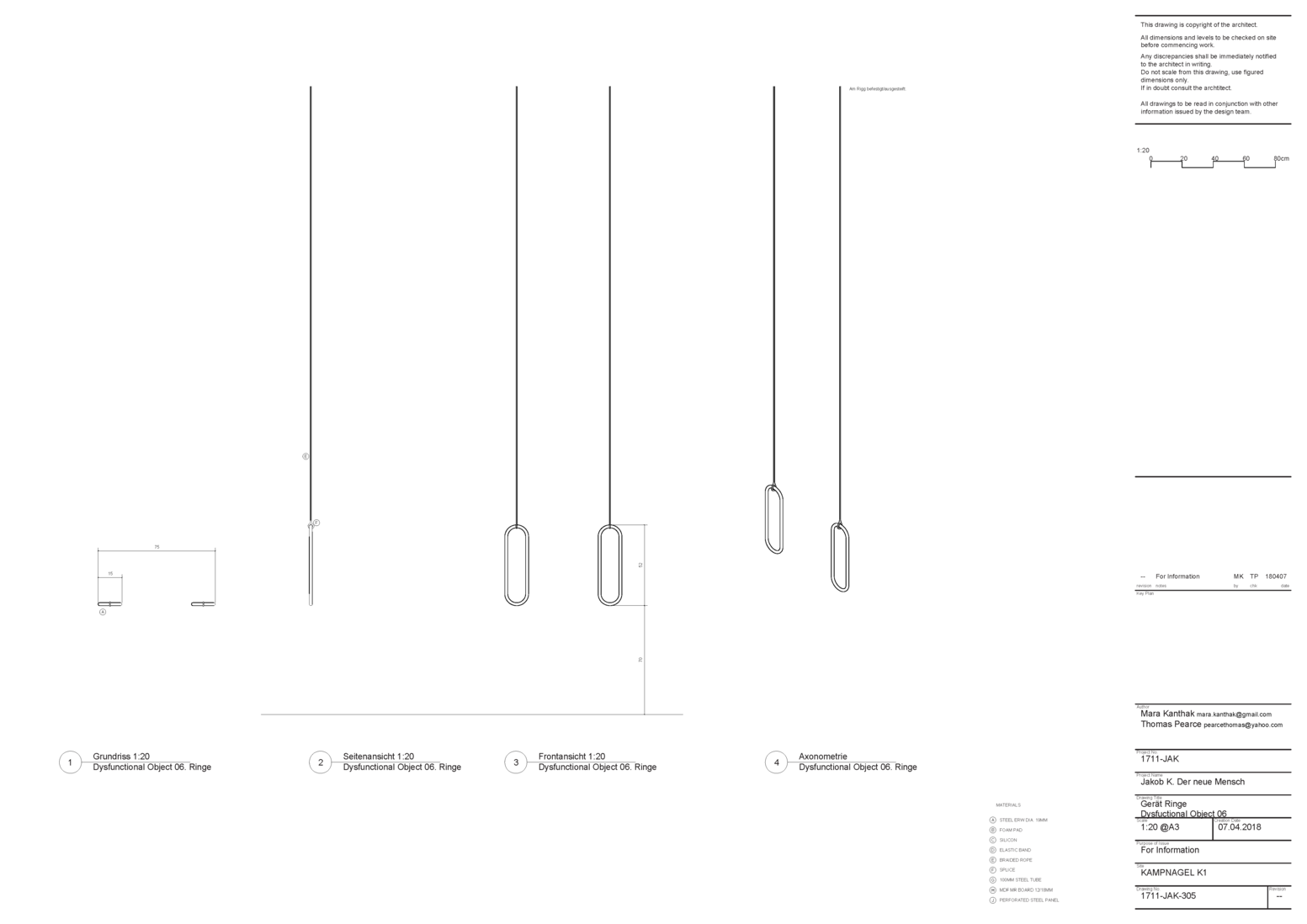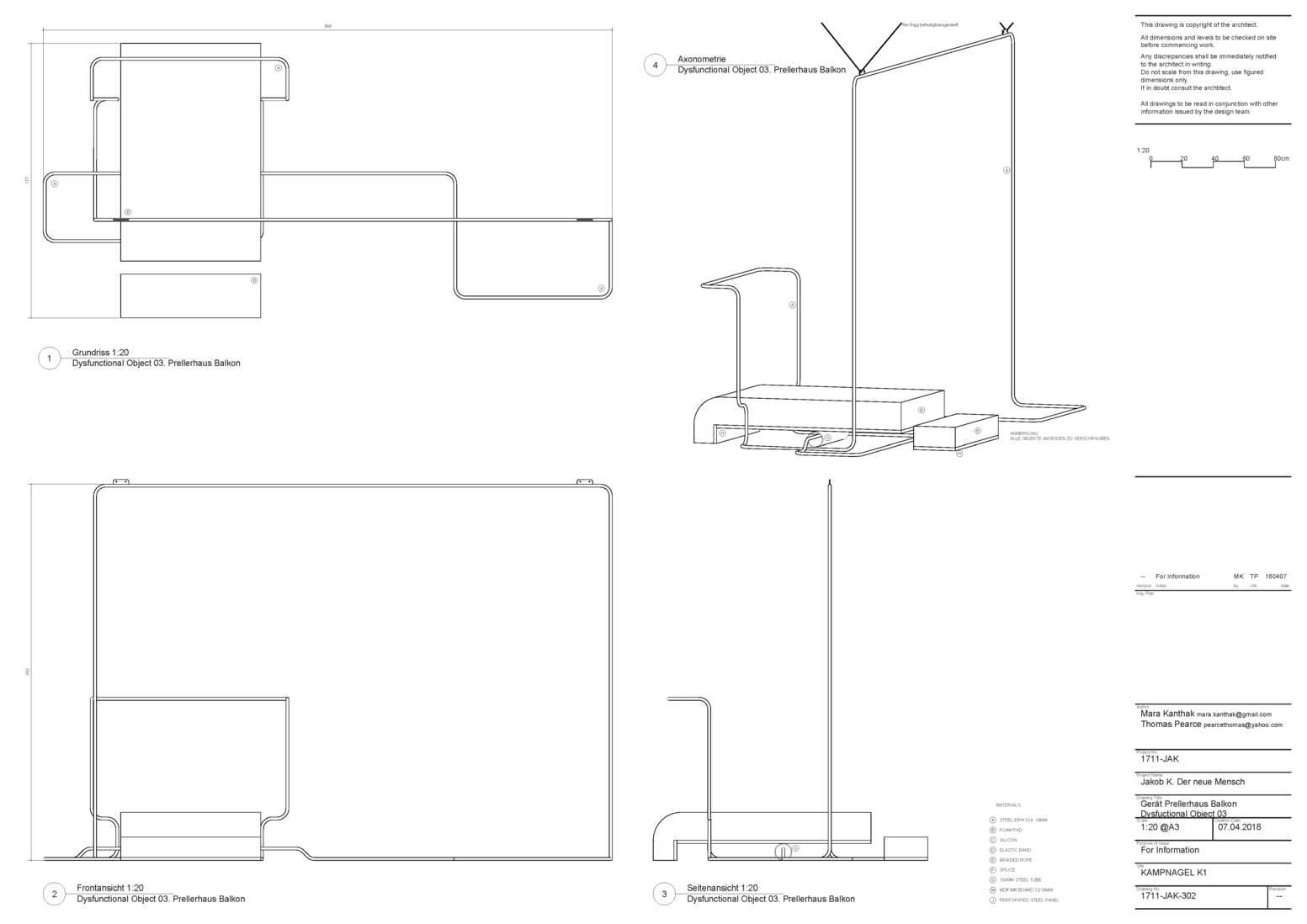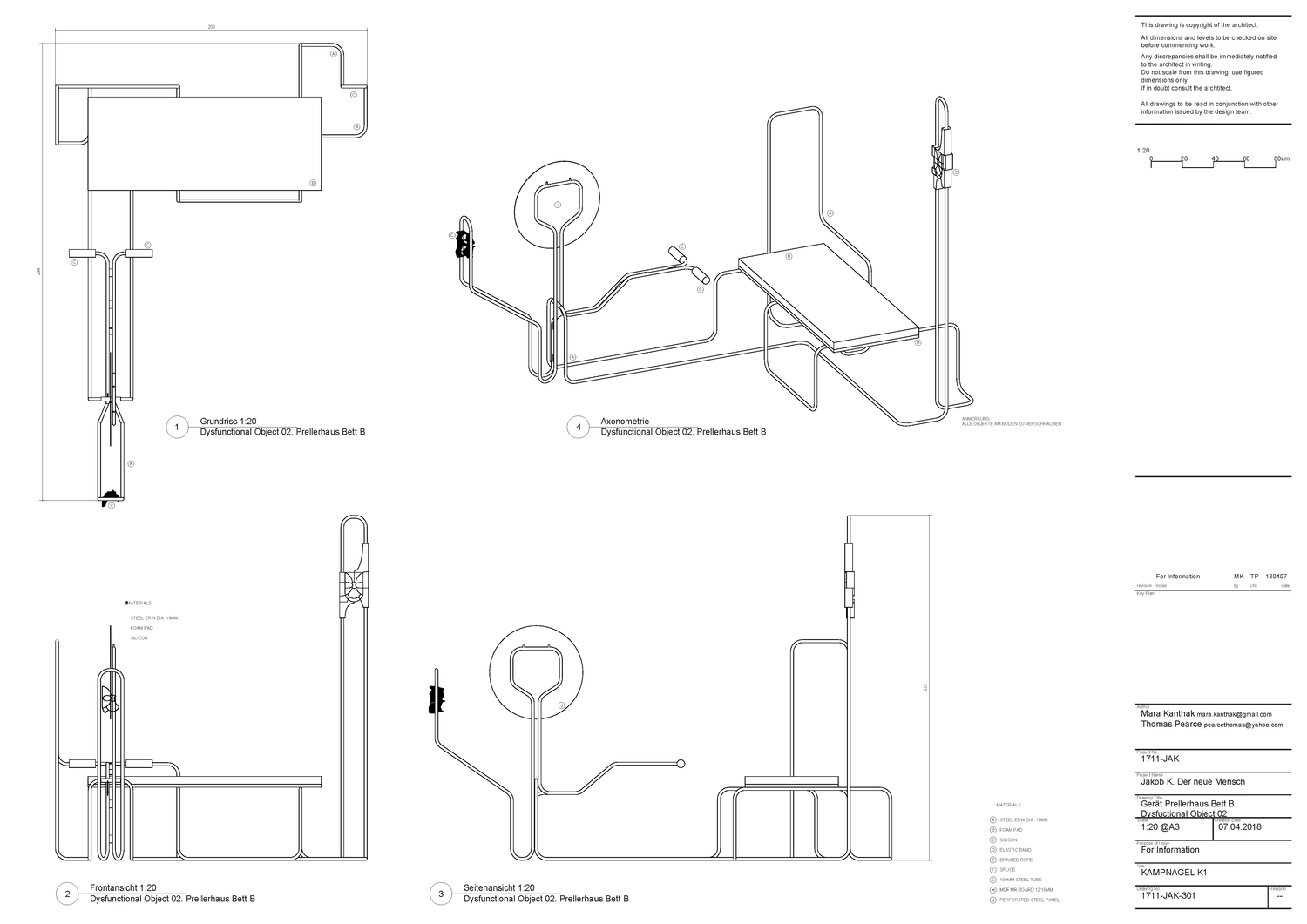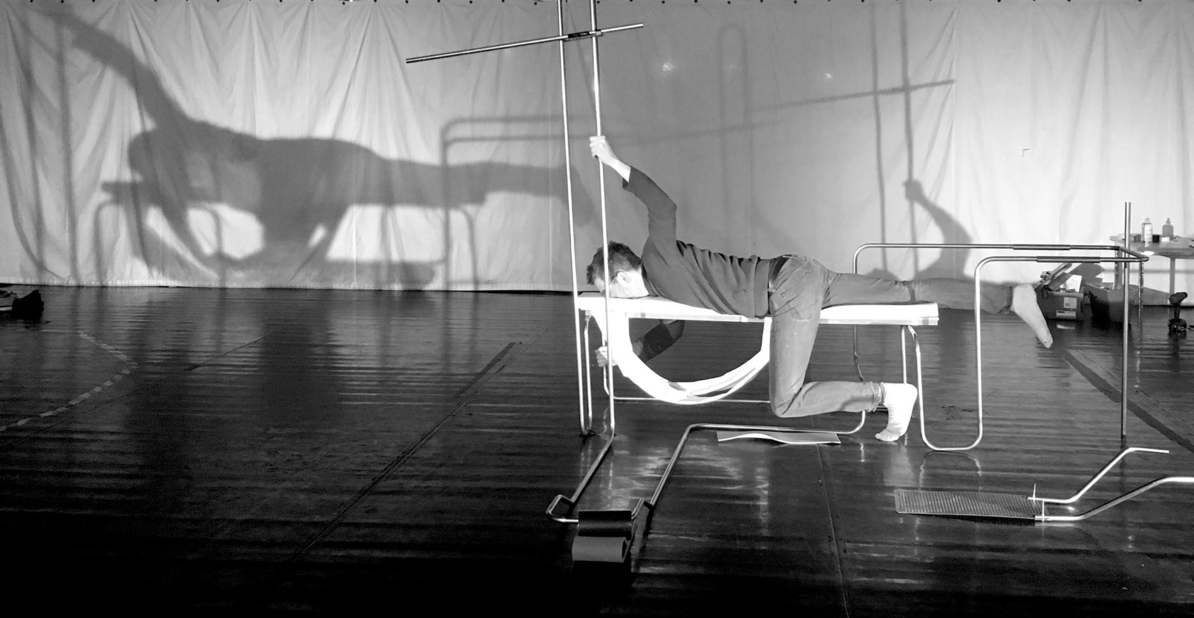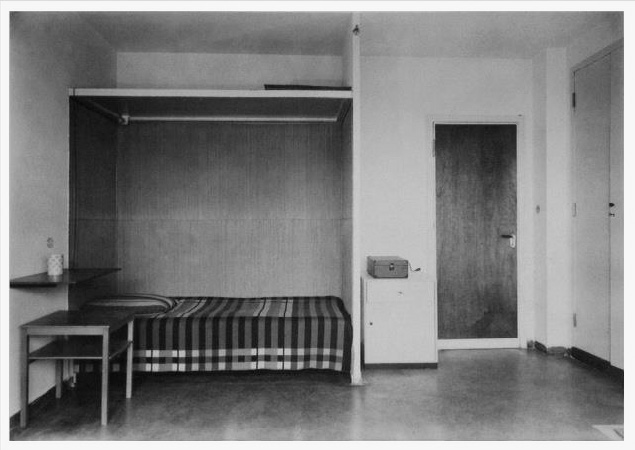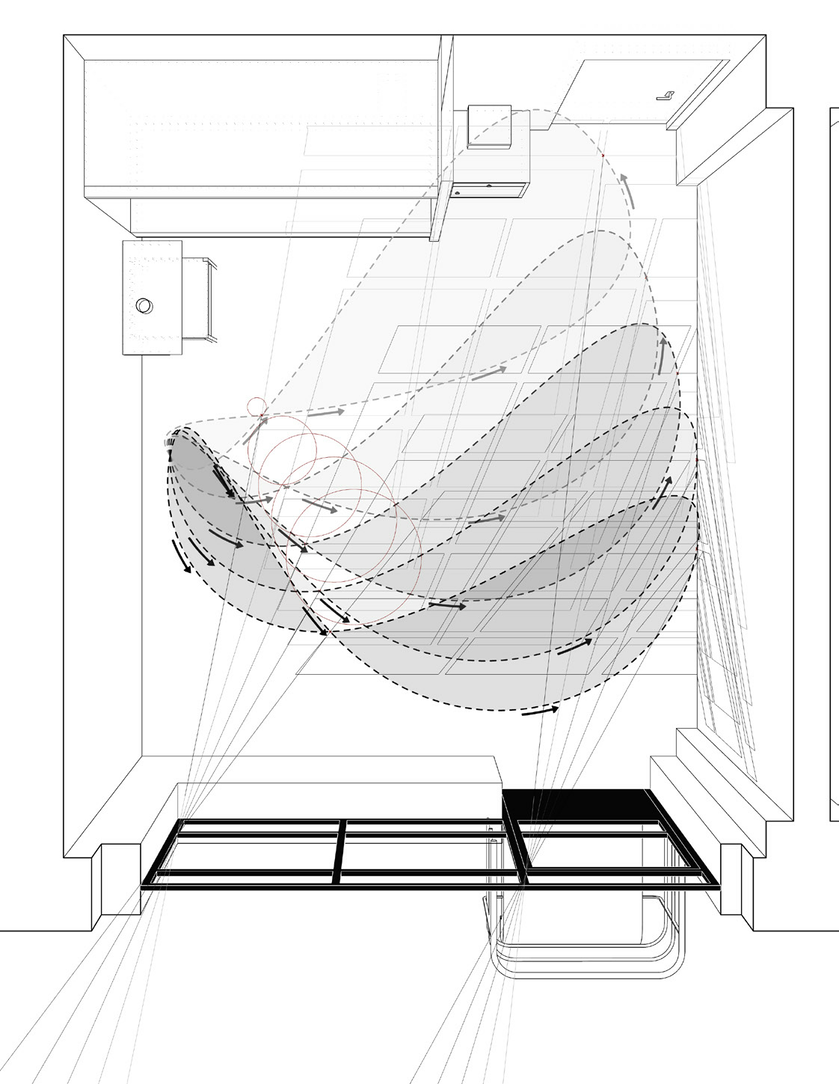Rekonstruktionsgerät 1 (RG01) is one of two reinventions of Klenke’s alleged1 room in the Prellerhaus, the studio building of the Dessau Bauhaus. The instrument, made of bent tube steel components, adopts the proportions of the bed situated in the corner of the sparsely furnished room, while next to it, a layering of suspended scrim sheets traces the position and proportion of the studio’s door. In RG01, Klenke’s bed keeps its original length but is only 150 mm wide. Lying and sitting on it is awkward.
The RGs (short for Rekonstruktionsgeräte or ‘reconstruction instruments’) are the main defining elements of the stage set. They result from a crossbreeding of three inputs: the architectural elements of Klenke’s studio in the Prellerhaus; contemporary fitness apparatuses; and, thirdly, Bauhaus teacher Marcel Breuer’s iconic steel tube furniture, whose materiality, size, and logic they quote. After being conceived as such, the RGs are exposed to a much less clearly delineated and predictable ‘input’: the performing body.
The RGs are developed incrementally and collaboratively by the performers and architectural researchers. At first, we stage site-specific performative improvisations in Klenke’s studio in Dessau (hover over the images for more information). Having returned to our rehearsal room in Hamburg, we arrange found objects to reconstruct the Dessau studio and its furnishing. These objects are then activated by the performers, who dismantle and misuse them for unscripted exercises: a torso rotates repetitively, limited in its degrees of freedom by the axis of a chair perched on a coat hanger; a body is folded to fit within the square proportion of a wardrobe; a clothes rack becomes a rowing machine. In line with Schlemmer, the alterity of these objects, which is regained through their mistranslation by the performers, is used as a constraint and an affordance.
As the premiere nears, the growth of the family of instruments needs to be halted. We design and fabricate this family, and slowly it starts populating the stage set. Even when the instruments’ fabrication is finished, the process of invention through use is not: during the rehearsals, but also during and after the performance, the instruments are to be discovered by the audience, who are actively invited to partake in the ongoing open-ended practice of re- and misinterpretation – after one of the performances, for example, some members of the audience, lingering in the performance space, use RG06 (a set of hanging gymnastic rings made of the same bent tubes as the other RGs) as swinging pendulums structuring a micro-choreography that traces figures of eight in between the pendulums, as they swing with ever-increasing frequency.
We film these improvisations but talk little about them. The filmic documentation informs the design and fabrication of the first steel-tube prototypes. We start calling these ‘open-ended fitness apparatuses’: we study gym instruments in brochures and borrow their language and articulations yet at the same time withstand their prescriptive functionality. Though imagining and sketching potential uses, we ship them from London to Hamburg with an assembly manual but without user instructions.
When we, the architectural researchers, later arrive in Hamburg ourselves, we are asked to join in the exploration of our own, already assembled, instruments. It is surprisingly easy to ignore the rules we ourselves have defined, approaching the apparatuses in their full strangeness and otherness. We discover that we merge with the instruments’ shadow when bending to their orthogonal logic; we misunderstand the narrow bed’s upholstering foam as a mask that can record a short-lived memory of our face. During conversations and improvisation, names are given to parts of the devices – some of them stick: the trombone, the antenna, the sextant.
So, what exactly constitutes the open-endedness of these instruments? How do the RGs, for example, differ from the found objects used in the above-described initial studio improvisations. These objects were lifted from their habitual context and ‘misused’, despite their prescriptive and clearly delineated functions and design intention as, for example, clothes racks or chairs.2
This is very different to the design intention of the RGs: when conceiving of the instruments, we imagined the experience of encountering them to be like entering a gym full of strangely familiar yet elusive fitness devices. The precise nature of what exactly should be trained remains unspoken.3 Suggesting, but never fulfilling functionality, a certain ambiguity, an in-betweenness, is designed into them. This in-betweenness is injected at first through the heterogeneity of the ‘inputs’ of their cross-breeding (Klenke’s room, Breuer’s furniture, contemporary fitness apparatuses) but then develops a virtuality that exceeds these initial combinatorial ‘ingredients’ – in the words of Elizabeth Grosz, ‘a potential that always threatens to disrupt the operations of the identities that constitute it’ (2006: 93). The potential is for an open-ended multiplicity of activations and disobedient (mis)use, which eludes the control and authorship of the designer and resists habituation.
The instruments have an indeterminate capacity, an ongoing historicity and combinatorial productivity,4 through which they continue to enter into new liaisons and contaminations. Their meaning is unstable, indeed fragile – just like the body that balances on the too narrow bed (RG01) or enters onto the Prellerhaus balcony reinvented as a seesawing platform covered in thick foam (RG03). The instruments are questions rather than answers; they invite us to engage with them in a speculative, non-determinate conversation. If the training practice prescribed by normal fitness apparatuses is based on the endless repetition (entraining) of the same motion, the ‘untraining’ practice afforded by the indeterminate fitness apparatuses is one of open-ended invention (see Frischkorn and Pearce 2020).


